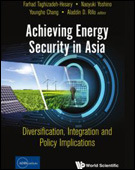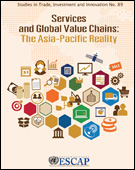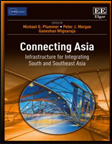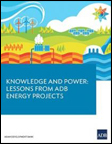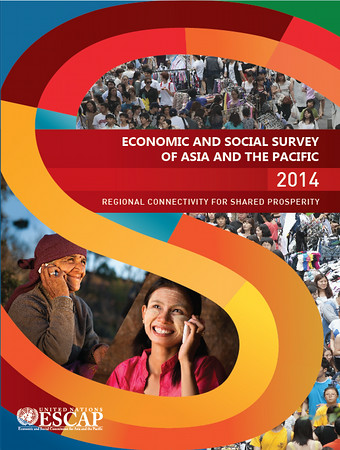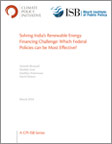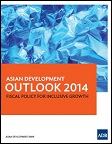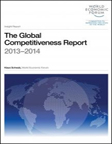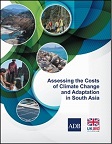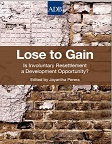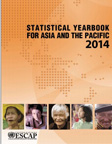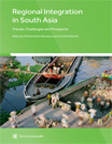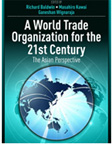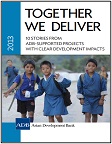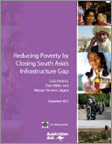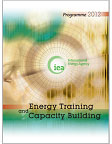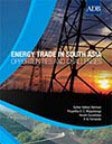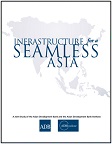Energy Results
Energy demand in the SASEC subregion is expected to increase over the next decade resulting from economic growth and rising per capita incomes and energy consumption. With energy resources in South Asia unevenly spread, regional energy cooperation could help countries develop their energy resources in an optimal manner to lower energy costs, improve regional energy security, and contribute to climate change mitigation. SASEC initiatives in the energy sector support improvement of energy trade infrastructure, developing a regional power market by harmonizing legal and regulatory frameworks, and developing low-carbon alternatives and conservation and energy efficiency measures.
ENERGY INDIA
PUBLICATIONS
total items: 20This publication reviews the status of energy security in Asia. In South Asia, countries face challenges in achieving energy security and climate goals. India and Bangladesh, for instance, face rising energy import bills while Maldives depends on oil products. The book suggests that countries and regions can achieve energy security through energy cooperation and diversification. This would lead to economic growth and poverty reduction, as well as mitigate energy security risks from climate change.
Source: Asian Development Bank Institute and World Scientific
This book reviews issues concerning the roles of services in global value chains. It presents a framework for assessing links among different services and between services and the manufacturing sector. The book explains the contribution of services to global value chains in the Asia-Pacific region and to the world and also draws lessons with which countries could understand the importance of services and participation in global value chains to achieving sustainable development.
India has significant hydropower potential and can meet a demand of around 85 gigawatts, at 60% load factor. Increasing the country’s hydropower capacity could reduce generation costs and benefit both communities and industry. Hydropower also has the advantage of contributing very little to carbon emissions. However, only 41 gigawatts of hydropower capacity has been installed, accounting for only 28% of the total potential. Hydropower can play a crucial role in India’s sustainable development and energy needs given that it meets the criteria of sustainability, availability, reliability, and affordability. This publication provides recommendations that could be of use to policymakers and other interested parties. The book lays out the status of hydroelectric power in India and analyzes opportunities to increasing capacity. It provides recommendations with regard to market development, safeguard issues, financing, land acquisition, technical challenges, hydropower planning, and enabling infrastructure.
Source: The Associated Chambers of Commerce of India and PricewaterhouseCoopers
The Asian Development Bank (ADB), through its Climate Technology Finance Center, seeks to accelerate clean technology entrepreneurship and investment in Asia by supporting programs that aim to produce investable clean technology, risk capital for clean technology, technological knowledge, and a stronger clean technology ecosystem. This brochure gives a brief background on how ADB works with start-ups across Asia to promote more efficient management of energy and natural resources.
Source: Asian Development Bank
This book contains background papers prepared for the Asian Development Bank and the Asian Development Bank Institute joint study, 'Connecting South Asia and Southeast Asia.' It emphasizes the potential contribution to growth that greater connectivity—through better transport and energy infrastructure and improved soft infrastructure, including trade facilitation—between South Asia and Southeast Asia can foster. With benefits including greater participation in global supply chains for South Asia; lower trade costs; and increase in inter- and intraregional trade, the book underscores that, at a juncture where closer regional integration can secure sustainable and inclusive growth for economies in the two regions, specific policies should be examined and considered to enable both regions to maximize gains from greater integration.
Source: Michael G. Plummer, Peter J. Morgan, Ganeshan Wignaraja, eds.
This publication highlights good practices and lessons learned from Asian Development Bank projects in energy, which comprised 26.5% of ADB's total lending commitments from 2008 to 2014. It discusses how the region's energy sources are utilized, providing updates on recent developments and challenges, highlighting the need for sustainable energy initiatives. Featured projects include the Green Power Development Project in Bhutan, which developed clean energy for regional use and promoted cross-border power trade. As the first infrastructure-focused public-private partnership in Bhutan, it also illustrated how projects can benefit with the active participation of the private sector, foreign parties, and commercial and public financial institutions. Also featured is the Bangladesh-India Electrical Grid Interconnection Project, which reduced Bangladesh's energy deficiency by enabling the country to affordably import 500 megawatts of electricity from India. This electrical link laid the groundwork for a regional energy market, an important step toward achieving a functioning regional electricity network in South Asia.
Source: Asian Development Bank
This 2014 edition of UNESCAP's flagship publication emphasizes the importance of furthering regional connectivity in Asia-Pacific—a region which, despite significant reductions in poverty levels, is now witnessing rising income inequality, both within and between countries. It calls for driving the region's growth by exploiting the interdependence and synergies of five elements: trade and transport connectivity, ICT networks, energy connectivity, people-to-people networks, and promotion of knowledge-based economies, and advocates approaching connectivity as a regional public good.
Source: UNESCAP
As India works toward increasing the use of renewable energy across the country, unsubsidized renewable energy remains 52-129% more expensive than conventional energy and needs policy support. This joint publication by the Climate Policy Initiative and Indian School of Business weighs in on federal policies that can provide a solution to India's renewable energy challenge, and asks whether existing support policies are the most cost effective.
Various policies are assessed, in light of the different criteria federal policymakers consider. Existing federal policies are compared with a recommended class of debt-related federal policies using a suggested framework. The study concludes that long-term, debt-related policies are more cost-effective. The research also presents viable short-term policy options.
Source: Gireesh Shrimali, Shobhit Goel, Sandhya Srinivasan, David Nelson
The Asian Development Outlook, ADB’s flagship economic publication provides comprehensive macroeconomic analysis in Asia including growth projections by country and region. The Asian Development Outlook 2014 forecasts that developing Asia will grow 6.2% in 2014 and 6.4% in 2015. South Asia remains one of the slowest growing subregions—although growth is forecast to improve by 5.3% in 2014 and 5.8% in 2015.
Source: Asian Development Bank
The World Economic Forum's Global Competitiveness Report offers a platform for dialogue among key stakeholders in government, business, and civil society on improving the living standards of the world’s citizens through insights on institutions, policies, and factors that drive or hinder growth and national competitiveness. Using the Global Competitiveness Index (GCI), twelve pillars are considered, including infrastructure, which, among factor-driven economies of Bangladesh, India, and Nepal, impacts the location of economic activity, reduces distance between regions, and enables production and faster flow of goods. Market size—essential for countries with small domestic markets—is another key index measured. The 2013-2014 report also includes an assessment of newly-covered Bhutan, and an analysis for the drop in India's GCI ranking.
Source: Klaus Schwab
This book discusses the economic costs and benefits of unilateral and regional actors on climate change adaptation in Bangladesh, Bhutan, India, the Maldives, Nepal, and Sri Lanka. It provides the total economic loss throughout the 21st century and estimates the funding required for adaptation measures to avert potential losses. Huge impacts are likely on vulnerable sectors in the region, with South Asia losing on average nearly 2% of its gross domestic product by 2050. Results of the study will aid climate change adaptation in the region, including initiatives for regional cooperation.
This book examines how displaced persons recover from physical and economic displacement in the South Asian context using resettlement case studies from India, Nepal, and Sri Lanka. Despite improvement in national policies and willingness to enforce good practices, the level of involuntary resettlement good practices in South Asia varies widely. There is need for greater commitment, legal reforms, and adequate resources to ensure that involuntary resettlement becomes a development opportunity for all project-affected persons.
Source: Perera, Jayantha (ed.)
The Statistical Yearbook contains comparative statistics and facts about the 58 regional members and associate members of the Economic and Social Commission for Asia and the Pacific. It includes brief analyses of 32 key development features such as energy supply and use, international trade, and transport, among others. In energy, the region’s production structure is highly resource-intensive, although per capita energy use is low. The section on international trade recommends focusing on raising domestic value-added rather than increasing gross exports in Asia and the Pacific. Finally, investment in environmentally sustainable transport is encouraged.
Source: United Nations Economic and Social Commission for Asia and the Pacific
This study presents an assessment of trade and economic cooperation among South Asian nations, explores emerging challenges, and highlights policy issues to foster regional integration. It provides perspectives on potential new areas of cooperation such as investment, regional supply chains, energy, and cross border transport networks. The four areas of focus are: potential gains from South Asian regional integration, key areas for cooperation resulting in effective regional integration, country perspectives of regional cooperation, and case studies on bilateral cooperation. This volume aims to further contribute to policy discourse on effective regional cooperation with perspectives from Bangladesh, India, Maldives, Nepal, Pakistan, and Sri Lanka.
This Asian Development Bank Institute book examines key changes in the world trading system and explores policy implications for Asia. Through a compilation of essays from prominent international and Asian trade experts, this book presents interaction of market forces and trade regulation. Lessons from the Asian experience offer new approaches and economic policies to sustain growth, presenting the World Trade Organization as a forum to improve regional and global trade governance in the 21st century.
Source: Richard E. Baldwin, Masahiro Kawai, Ganeshan Wignaraja (Eds.)
Together We Deliver showcases ten ADB projects across Asia and the Pacific that demonstrate clear development impacts, replicable best practices, and valuable use of innovation. Among those highlighted is SASEC's Green Power Development Project in Bhutan, which is boosting the national economy through clean energy exports to India and also funding social programs that bring electricity to more than 8,500 rural poor households. The book also features a rural road project in India that connects remote communities to schools, hospitals, and other facilities. Capturing a wide range of ADB's assistance, the book portrays how ADB is changing for better the lives of many in Asia and the Pacific region.
Source: Asian Development Bank
This report takes a critical look at inter-and intra-regional infrastructure of South Asia and explores inequality of access across space and time. It gives an approximate total cost of regional infrastructure needs and investment trends in the South Asia region, along with a proposed framework on ranking of infrastructure needs. The report also examines better usage of existing resources and policy options to help the poorest gain better access to infrastructure. Finally, it recognizes the enormity of infrastructure deficiencies in South Asia and acknowledges that a good mix of infrastructure investment and supportive reform implementation will enable the region to close the infrastructure gap.
The International Energy Agency (IEA) Energy Training and Capacity Building Programme brochure provides an introduction to the themes, contents, and training formats of the courses offered by the IEA. The modules are designed to benefit energy specialists and experts involved in formulating strategies and policies on a national scale, by assisting them in ongoing implementation and analysis and helping them meet forthcoming energy challenges.
Source: international Energy Agency
The South Asia Regional Energy Study was completed as an important component of the regional technical assistance project Preparing the Energy Sector Dialogue and South Asian Association for Regional Cooperation Energy Center Capacity Development. It involved examining regional energy trade opportunities among all the member states of the South Asian Association for Regional Cooperation. The study provides interventions to improve regional energy cooperation in different timescales, including specific infrastructure projects which can be implemented during these periods.
Source: Sultan Hafeez Rahman / Priyantha D. C. Wijayatunga / Herath Gunatilake / P. N. Fernando
The study reviews regional infrastructure being enhanced through regional cooperation in Asia and examines major issues and challenges. It suggests a framework for pan-Asian infrastructure cooperation, anchored on a long-term vision of creating a seamless Asia that will not only enhance the region's competitiveness and extend its global reach, but also help reduce poverty and promote greater environmental sustainability.
Source: Asian Development Bank / Asian Development Bank Institute

